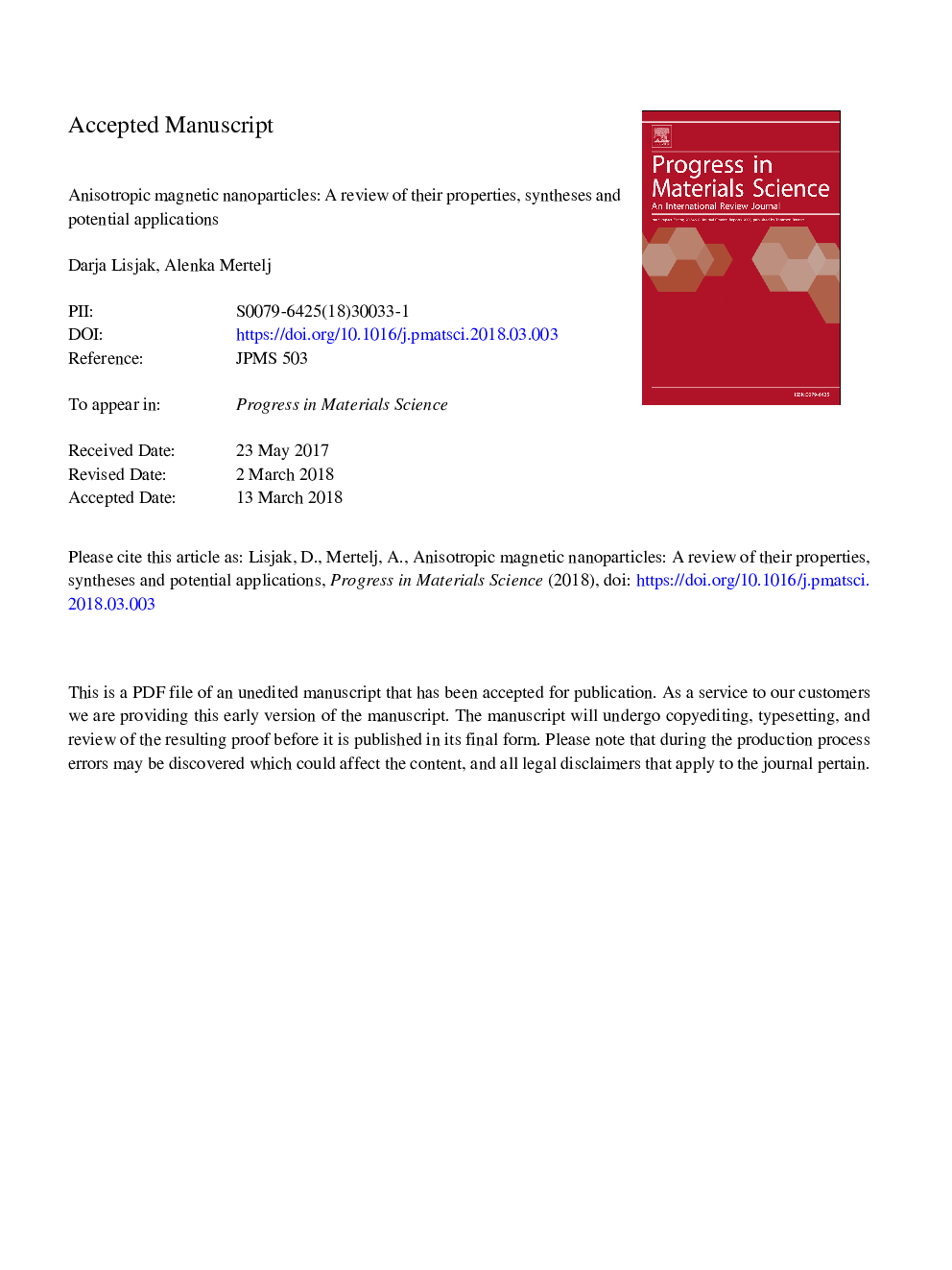| Article ID | Journal | Published Year | Pages | File Type |
|---|---|---|---|---|
| 8023043 | Progress in Materials Science | 2018 | 128 Pages |
Abstract
Magnetic nanoparticles (MNPs) are of great scientific interest because of the size effect associated with their magnetic properties and, even more so, because of their wide-ranging application potential in technology and biomedicine. In this review we focus on anisotropic MNPs that exhibit (i) elongated shapes and (ii) plate-like shapes. This is because the shape and magnetocrystalline structure induce direction-dependent magnetic properties. Different synthesis strategies enable a spatially defined particle growth or assembly into an elongated shape, while the synthesis of plate-like MNPs is limited to only a few examples, e.g., hexaferrites. The control of interparticle forces is necessary to exploit the specific behaviour of anisotropic MNPs and to fabricate multifunctional materials. The assembly and/or complexation of anisotropic MNPs with other functional entities are the basis for developing direction-dependent and magnetically sensitive properties (e.g., optical, electrical, mechanical, chemical). In the first part, the magnetic properties, relevant magnetic materials and syntheses of anisotropic (in particular, elongated and plate-like) MNPs are reviewed. In the second part, the interparticle interactions, with an emphasis on the development of new, complex materials with specific behaviours, are presented. The potential applications of these new, anisotropic, multi-functional materials with future perspectives are given in the final part.
Keywords
Related Topics
Physical Sciences and Engineering
Materials Science
Nanotechnology
Authors
Darja Lisjak, Alenka Mertelj,
